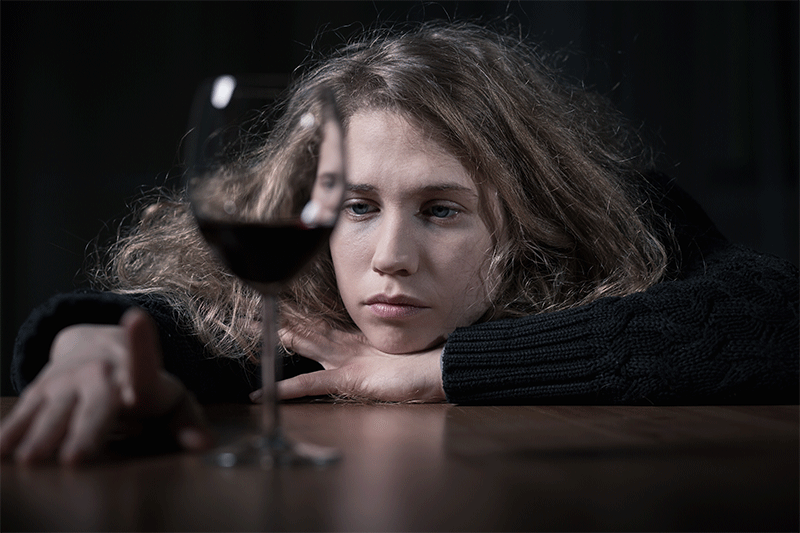At 51, C.M. is a shadow of his former self. A shadow who has escaped lung cancer but it’s mouth cancer that now keeps him away from the cigarettes to which he was inextricably linked for 44 years. He swallows with difficulty, even saliva, and is always thirsty.
He doesn’t really feel like smoking anymore. His friends in the bar where he used to go—for the mates or the booze, not even he can say for sure—have all forgotten him. And that’s sadder than cancer. He looks at pictures of his childhood with a long, unreadable stare. Is he exhausted from hunger? Or maybe he wonders what happened to the dreams of that chubby little boy who never for a moment thought of becoming an adult addicted to tobacco and alcohol.
If they could see the end from the beginning, most people would surely pause before doing many of the things they now throw themselves into in the hope that the risks will never materialise. The World Health Organization (WHO) talks about the materialisation of the risks associated with substance dependence in hard figures: 3.3 million people die each year from alcohol consumption.[1] Alcohol is the cause of more than 200 diseases and disabilities. If no one drank alcohol, 5.1% of the global economic burden of alcohol-related disease and injury would disappear. Alcohol causes death and disability. Approximately 13.5% of all deaths among 20-39 year olds are caused by alcohol. The latest causal evidence on alcohol shows that alcohol abuse increases the incidence of infectious diseases such as tuberculosis and worsens complications of HIV infection.[2] And the latest study on safe levels of alcohol consumption has lowered the bar to zero. In fact, the only “safe” consumption of alcohol is consumption that has not taken place.[3]
As for smoking, the WHO reports that it “kills half of its adherents.” For every two friends who smoke at a restaurant, one will die of a tobacco-related disease. Every year, more than 6 million people suffer the fate of this friend. Another million suffer the fate of the non-smoking companion who happens to be sitting at the table and gets sick from second-hand smoke.
There are an estimated 1.1 billion smokers worldwide, 80% of whom live in low- and middle-income countries. Smoking is not only associated with impoverishment, disease and death, it also causes them.[4]
While alcohol consumption and smoking can be said to cause long-term addictions, there are substances that we know are addictive but are known only to be addictive in the short term, for the simple reason that their addicts die much more quickly. We are, of course, talking about drugs. Worldwide, an estimated 275 million people use drugs such as cannabis (the most common, with 192 million users), amphetamines, cocaine, and opioids. Around 34 million people used opioids in 2016, and no less than 27 million people had health problems due to opioid use in the same year. A lesser-known truth about opioids (morphine, heroin, tramadol, oxycodone and methadone) is that because they affect the part of the brain that controls breathing, high doses can cause respiratory depression (a dangerous decrease in breathing rate) and death. A special category of people affected by drug use are the 11 million people who inject drugs. Of these, 1.3 million are living with HIV, 5.5 million with hepatitis C, and 1 million with both.
The prevalence of addiction to alcohol, tobacco and drugs has been studied extensively over the years. The same cannot be said for addictions that do not involve a substance, but other habits. These behavioural addictions, which have recently been included in scientific classifications of mental illnesses, are still poorly understood in terms of population prevalence, symptoms and treatment.
Academic research on gambling addiction, compulsive shopping, exercise addiction, overuse of mobile phones and the internet, workaholism, or food abuse is at the beginning of a long road. But scientists are beginning to see similarities between substance and behavioural addictions. Diagnostic criteria for behavioural addictions have recently been aligned with those for substance use disorders. Experts agree that both substance and behavioural addictions share withdrawal symptoms, increased tolerance, continued use despite rational knowledge that the addict is harming themselves, unsuccessful attempts to quit, and risk of relapse after cessation.[5] There is growing evidence of the psychological and neurobiological similarities between substance use disorders and behavioural addictions, which provides a good starting point not only for treatment but also for prevention strategies.
Prevention
Whether it is alcohol, tobacco, drugs or various behavioural addictions, each addiction is based on a constellation of factors. In general, the more risk factors a person has, the more likely he or she is to develop a particular addiction. The reverse is also true. The more protective factors a person has, the lower the risk of developing an addiction.
Experts list the following risk factors: aggressive behaviour in childhood,[6] lack of parental supervision,[7] lack of social skills,[8] previous experience with the object of addiction,[9] availability of the object of addiction[10] and belonging to a social community with limited material resources.[11] In contrast, protective factors include the ability to exercise self-control,[12] consistent parental support and supervision,[13] the maintenance of positive social relationships,[14] good grades at school,[15] policies against various addictive substances[16] and community resources.[17]
Taking action to reduce risk factors and increase protective factors is the obvious solution[18], but the question is: how can this be done? The answer varies depending on which entity is in a position to respond.
The key to addiction prevention strategies lies with a team made up of parents, educators in the formal education system, public policy makers and community-based groups (media, NGOs, churches). We generally expect them to work together to create a social atmosphere so healthy that it is incompatible with addiction, as each can make a significant contribution to addiction prevention.
A model of good practice comes from Iceland, which has developed and implemented with exemplary success a programme for the prevention of drug use (not just abuse!) among young people. The Icelandic model was based on the latest scientific research in the field—what experts call a comprehensive, evidence-based approach[19]—and brought together public policy experts, behavioural scientists, social work practitioners and Icelandic residents.

Iceland: proof that it can be done
During the 1990s and early 2000s, drug use among 15- and 16-year-olds increased in many European countries, and Iceland was no exception. The proportion of 10th graders who smoked daily increased from 15% to 22% between 1992 and 1998 alone. The proportion of teenagers who used hashish also rose from 7% to 17% over the same period. In terms of alcohol consumption, no country in Europe had higher levels of alcohol consumption among teenagers than Iceland. Some 42% of Icelandic teenagers in a survey cited by Mosaic Science[20] said they had gotten drunk at least once in the previous month. As a result, Iceland also had the highest rate of teenage drink-driving accidents, with 14% of teenagers having experienced at least one such incident.
Since information programmes in schools did not seem to work, psychologists went the other way and looked not at the characteristics of young smokers but at those of non-smokers.[21]
The non-smokers’ parents spent more time with them, and the teenagers were involved in various extracurricular activities and did not go out late at night. So the government took steps to encourage all teenagers to take part in fun and healthy activities. It subsidised music, dance, sports and art clubs so that young people could take part in group activities where they felt they belonged. It introduced a family allowance of almost €300 a year for activities with children. Schools introduced courses for parents to teach them how to spend quality time with their children. Alcohol sales to under-20s and tobacco sales to under-18s were banned. And young people under 16 were forbidden by law to go out late at night. And it didn’t take long for these simple measures to pay off.
By 2012, 42% of 15- and 16-year-olds were doing sport at least four times a week. The number of teens who said they spent time with their parents during the week, not just on weekends, doubled. The number of young people who said they had gotten drunk at least once in the previous month fell by 90%. And only 3% of 15- to 16-year-olds still smoked. Today, Icelandic teenagers have the “cleanest” lifestyle of all European teenagers.[22]
Protective principles
The Icelandic programme was youth-centred and successful because it tackled the problem from several angles, constantly adapting the tools to the characteristics of the target group. The same measures will not work in a prevention programme for adults, as the impact of risk factors and the potential of protective factors vary greatly with the age of the target group. For example, risk factors related to a stressful family environment will have a much greater impact on a child,[23] whereas for a teenager the impact of friends who have a particular addiction will be more significant.[24]
The principle that remains valid in both cases, and also for adults, is that our relationships matter. If a group of friends can put pressure on someone to develop an addiction, it would take a well-rounded social network to make the group a protective force in helping to cultivate healthy habits.
Strong relationships nurture our sense of self-worth and help to strengthen our self-identity and values. These values in turn empower us, encouraging us to develop skills and tools to solve life’s (inherent) problems, rather than burying these difficulties under various addictions.
Religion also plays an important role in prevention, as one of the protective factors mentioned above. Spiritual values, nurtured through prayer and the discipline that true worship requires, have a protective effect on mental health. And religiosity in childhood has been shown to protect against addiction in adulthood.[25] It is a scientific reaffirmation of the ancient biblical verse: “Start children off on the way they should go, and even when they are old they will not turn from it” (Proverbs 22:6).
Alina Kartman is senior editor at Signs of the Times Romania and ST Network.


















